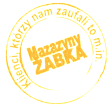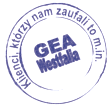Expert in working at height - IRATA
How does IRATA affect safety?
Working at height is one of the most difficult and risky jobs in the construction industry, so compliance with health and safety regulations plays a key role in protecting the health and lives of workers. Standards developed by the Industrial Rope Access Trade Association (IRATA) significantly reduce the risk of accidents. Elements such as IRATA Level 3 supervision have a significant impact on the supervision and efficiency of rope access work, providing guidelines and procedures to avoid potential hazards when carrying out tasks at height.

Health and safety training
Working at heights is a task that requires great care, as it carries high risks. In Poland, in order to ensure maximum safety, occupational health and safety legislation regulates obligations for both employers and employees. The main requirements, set out in the regulation of the Minister of Labour and Social Policy, include adequate training for employees, which should include theoretical and practical aspects.
Workers must be equipped with personal protective equipment (PPE) such as helmets, harnesses and belay systems. In addition, before working at height, the employer must carry out a risk assessment to identify potential hazards and implement appropriate procedures. Equally necessary are technical safeguards such as guardrails, safety nets or anti-fall systems to enhance safety in the workplace. Following these rules is essential to protect health and life when working at height.

Certification levels
IRATA is an international organisation that sets standards for working at height using rope access techniques. It has developed a certification system and operational procedures that enhance the effectiveness and protection of workers when performing tasks at height. IRATA certification includes three levels:
- 1 - basic skills for working at height,
- 2 - more advanced capabilities to implement complex manoeuvres,
- 3 - the highest level, authorising supervision of other employees.
The Level 1 worker is able to independently carry out rope access activities in vertical and horizontal techniques. He/she has a basic knowledge of position construction and rescue principles. According to the requirements of the IRATA system, he/she must work under the supervision of an L3 level person in accredited companies. Level 2 persons have full knowledge and skills in rope access. They prepare work stations and participate in rescue operations. They have advanced skills in the area of hoisting systems and rescue.
All their activities are carried out under the supervision of an L3 specialist, according to the standards of IRATA-accredited companies. Level 3 is responsible for supervising the work and managing the team. Employees at this level have complete knowledge and skills from levels 1, 2 and 3, and are familiar with advanced rescue techniques, legislation and the IRATA certification system.

The role of the IRATA level 3 certificate
The presence of an IRATA Level 3 certified worker is essential in high-rise projects for a number of reasons. First and foremost, this person is responsible for overseeing all operations, which includes risk assessment and preparation of a work plan to ensure the highest safety standards are adhered to. In an emergency situation, such as a fall or equipment failure, a worker with this certification has the rescue skills to act quickly and effectively, which can save lives.
In addition, he has extensive knowledge of rope access equipment and techniques, which allows him to monitor the state of the equipment and advise on the most effective and safest ways of working. His presence makes it possible to ensure compliance with health and safety regulations and the standards of the IRATA organisation, which significantly minimises the risk of accidents and potential legal consequences for employers.
IRATA Level 3 staff competencies
IRATA certifications play an important role in enhancing efficiency and health protection when working at height. Level 3 individuals oversee operations and are responsible for risk assessment and emergency response. Investing in proper IRATA training and certification is a step towards a safer and more professional approach to rope access. We encourage you to acquire the knowledge and skills that will contribute to your success in this demanding industry.
Questions and answers
1. what skills does a level three employee acquire?
A Level 3 certified employee gains advanced skills in rope access and supervision of height operations, allowing them to manage a team and safety procedures.
2. what are the requirements for level three?
In order to be certified at level three, candidates must demonstrate relevant experience, complete training and pass an examination to prove their skills and knowledge.






























